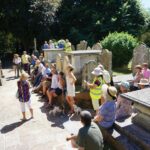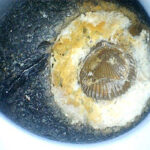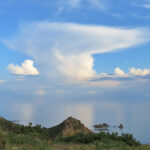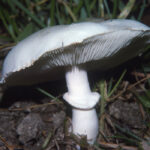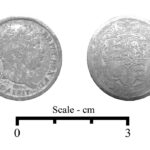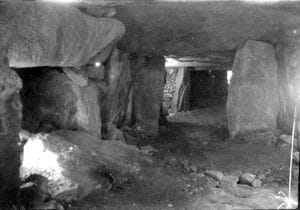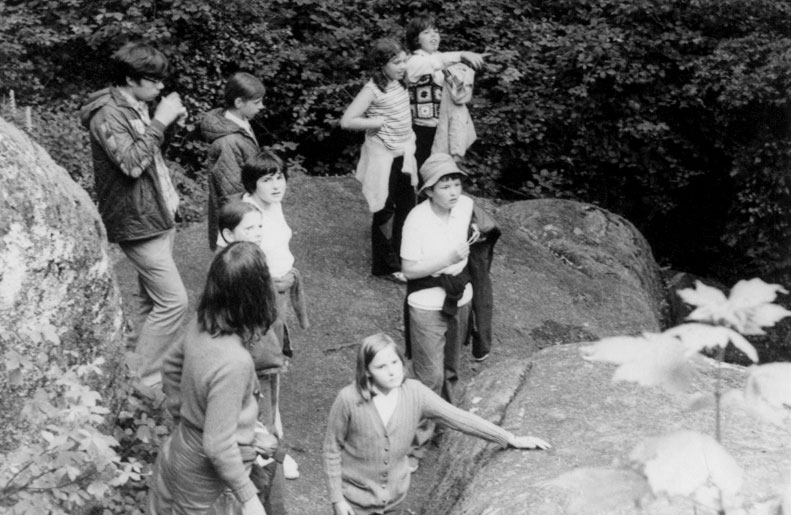The Archaeology Section has launched a major new research project to look at Jersey’s Neolithic landscapes, which were created by the Neolithic people, who as the first farmers having domesticated animals and grew cereal crops, became less dependent on the previous hunter-gatherer lifestyle. The Neolithic period in the Island lasted for some two and a half thousand years ending about four thousand years ago, and the activities of these Neolithic farmers changed the landscape from a heavily wooded island to the more open landscape that we know today.
The Neolithic people also erected megalithic structures like dolmens, passage graves and standing stones across that landscape, many of which survive today. What is less well known is where these people actually lived as very little evidence has been found in the form of houses, huts or shelters.
The Société excavated several the megalithic sites early in its 150-year history and acquired ownership of them to preserve and protect them for future research and study.

The new project seeks to revisit the archaeology previously done and update it with further research as well as the use of modern technology which had not been invented at the time of the original excavations.
The Archaeology Section launched the new project on 30th April 2023 (which was also European Day of Megalithic Culture organised by the Megalithic Routes Association, of which the Société is a member). The launch took place at the Section’s rooms at La Hougue Bie and the first part of the project subtitled “Neolithic Neighbours” was unveiled.

A map flagged with some of the known Neolithic sites
Neolithic Neighbours aims to engage with the immediate neighbours of the Société’s megalithic sites and ask the simple question “Have you found anything in your garden which may be Neolithic in age?”. Over the next couple of months, the Section will be approaching neighbours directly and providing resources packs to help them identify potential artefacts that they may have found or seen in their gardens.
At the project launch, a selection of Neolithic items such as stone tools, stone axes and pottery were on display and Section members explained how these items were made and used. Members of the public who attended were also reminded that they might even find larger items like querns (corn grinding stones) and even megaliths (large stones).
All finds and discoveries will be added to the database of Neolithic sites and finds and will be valuable in the search for new sites which have remained hidden and which have the capacity to expand our knowledge of the Neolithic period and its landscape. It is hoped and expected that later aspects of the project will involve the use of modern geo-physical survey equipment which enable us to look underground and interpret what is there without doing any digging. It is not that we do not hope to undertake excavations, it is just that nowadays, you need to provide reasons why you want to excavate and the theories that you are seeking to prove by doing so before permission will be granted.
In our 150th Anniversary year, what would the Société’s archaeologists of a hundred and fifty years ago have thought about all of this and the possibilities we now have?
